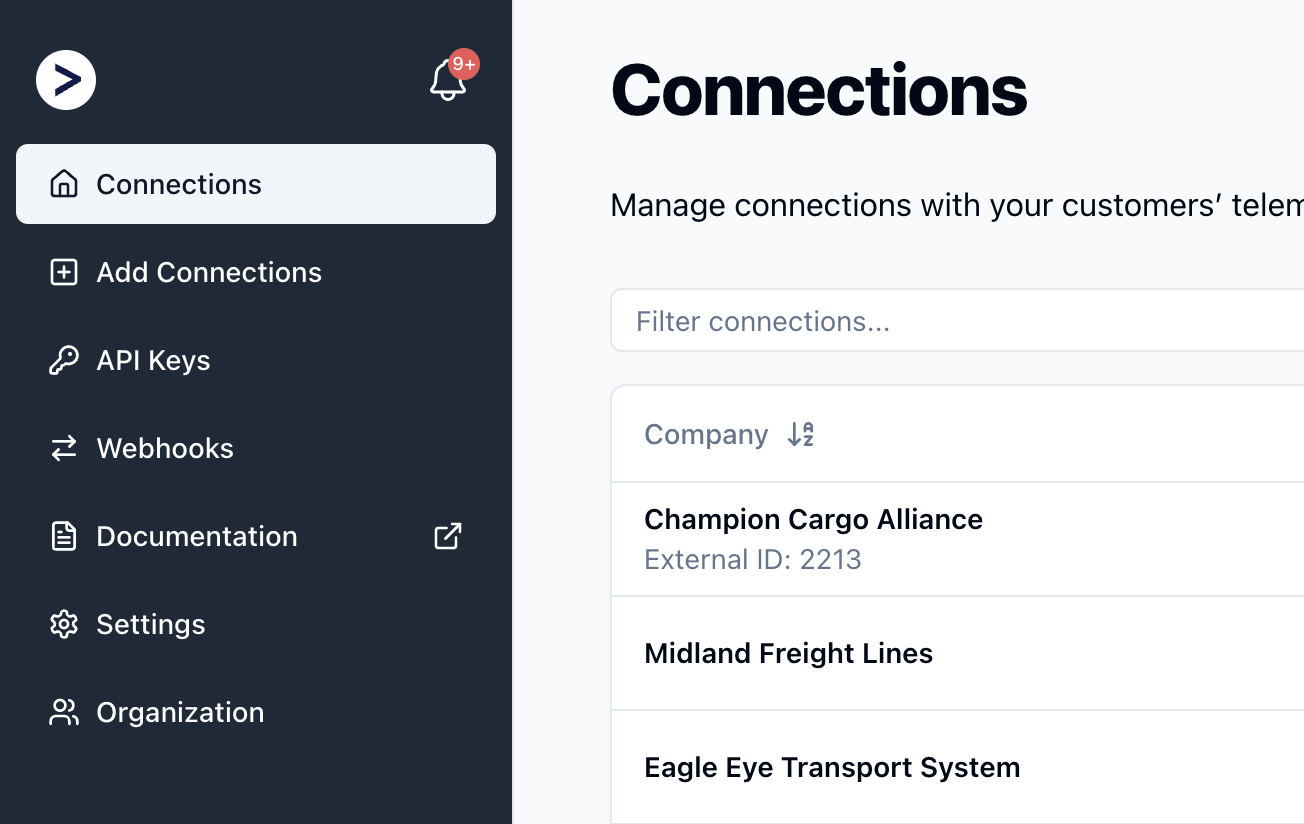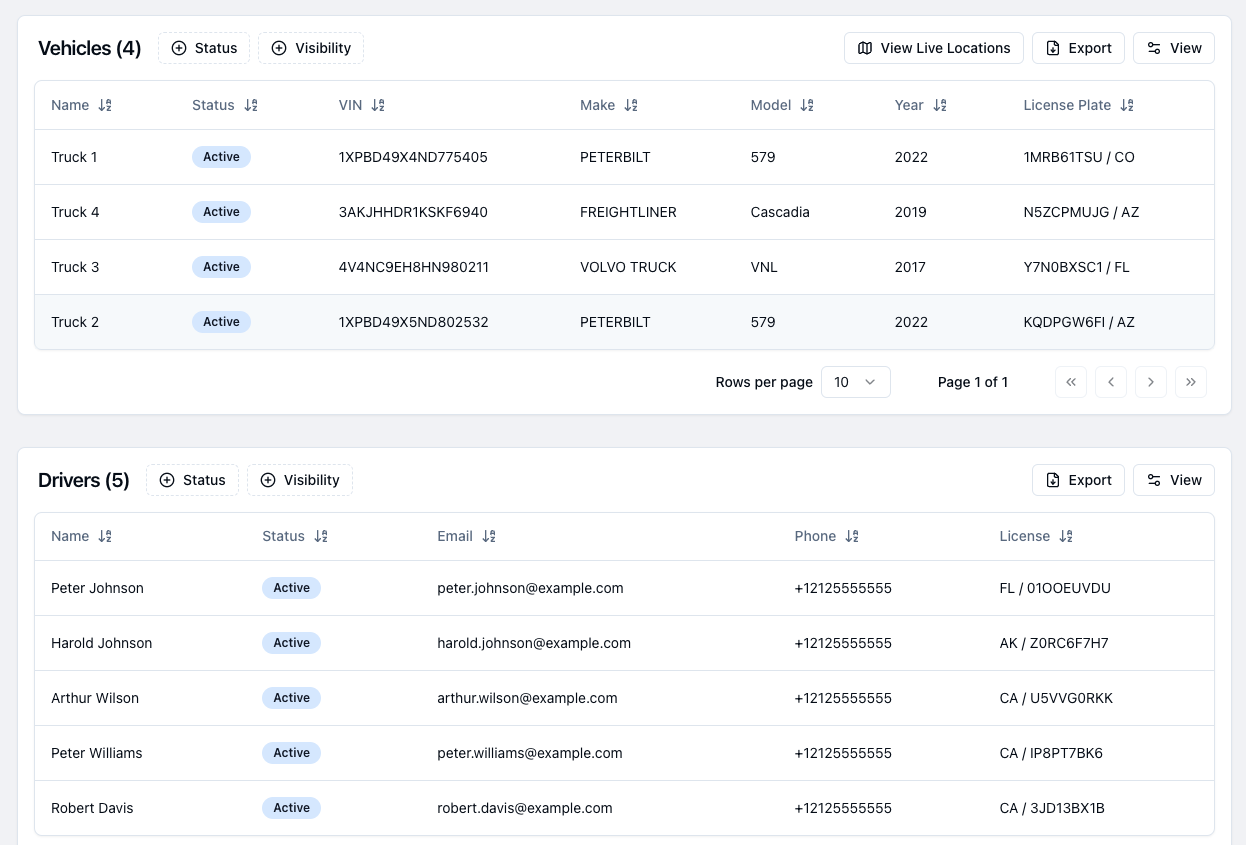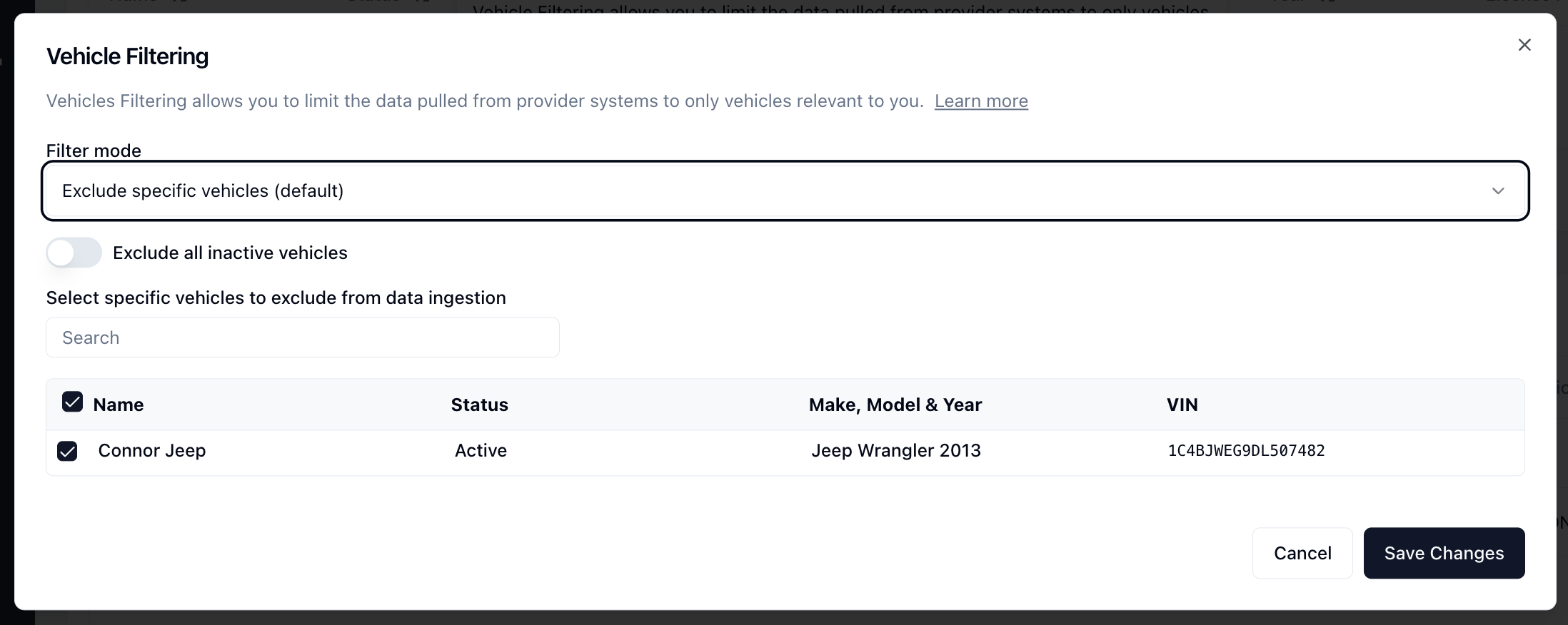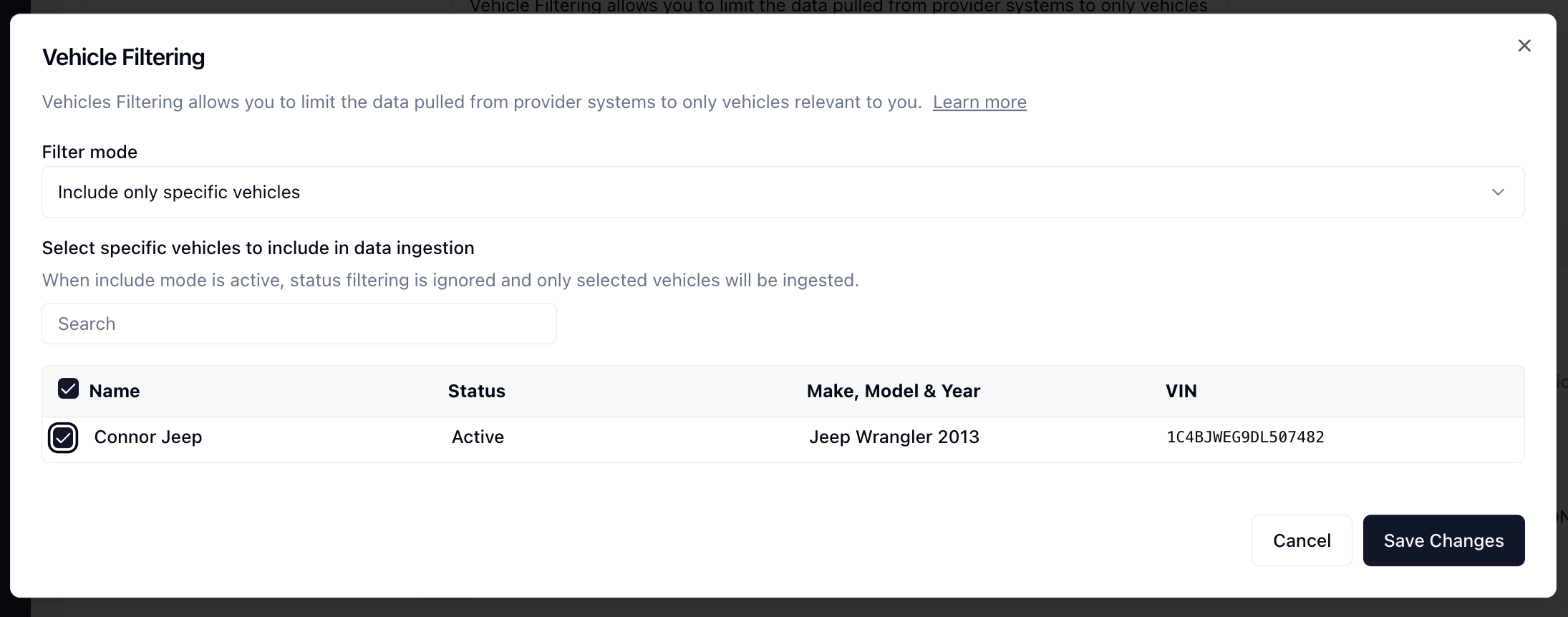Overview
Terminal allows you to filter vehicle and driver data by status (active/inactive) and by specific Terminal IDs. These filters enable you to limit the data pulled from provider systems to only what is relevant to you.Common Use Cases
- Reducing Data Volume and Costs: Limit ingestion to only active vehicles/drivers. This is especially valuable for fleets with many inactive vehicles.
- Multi-Fleet TSP Accounts: For fleets that share TSP (Telematics Service Provider) accounts with other fleets, you can selectively ingest only vehicles/drivers which are part of the relevant fleet.
- Precise Control: Use
includeIdsto specify exactly which vehicles/drivers should be ingested, regardless of their status.
Filter Structure
You can set filters on a given connection using a JSON structure that specifies filter criteria. Available Filter Options:status: Filter by vehicle/driver status (e.g.activeto include only active vehicles/drivers)excludeIds: Array of Terminal Vehicle/Driver IDs to exclude from data ingestionincludeIds: Array of Terminal Vehicle/Driver IDs to include in data ingestion (takes priority over other filters)
Filter Priority Rules
The filtering system follows a specific priority order:-
includeIdstakes highest priority: IfincludeIdsis present and non-empty, all other filter criteria (statusandexcludeIds) are ignored, and only the specified IDs are ingested. -
Standard filtering: If
includeIdsis absent or empty, the system applies:- First:
statusfiltering (if specified) - Then: Remove any IDs listed in
excludeIds
- First:
Examples
Include-only filtering (highest priority):vcl_456 and vcl_789 will be ingested, regardless of their status or the exclude list.
Standard filtering:
vcl_123.
Applying Filters
For Existing Connections via API
You can add or update filters on existing connections using thePATCH /connections/current endpoint. Include the filters object in your request body with the desired configuration.
To view the current filters applied to a connection, use the GET /connections/current endpoint.
For Existing Connections via Terminal Dashboard
- Navigate to the Connections page in the Terminal Dashboard.

- Click on the desired connection to open the connection details page.

- Click
Visibilityabove the Vehicle or Driver table.

- Click
Manage Vehicle/Driver Filtering.

- Configure filtering to include/exclude specific vehicles or drivers.

Exclude vehicles / drivers explicitly

Include vehicle / drivers explicity
- Click
Save Changes.
Visibility column in the Vehicle or Driver table via the View button above the table.
For New Connections
-
Initial Setup: When creating a new connection with filtering, Terminal first needs to perform an initial sync to identify all vehicles and drivers. To prevent ingesting unnecessary data before applying filters: - Set sync mode to
manual- Setbackfilldays to0Configure these sync settings through the [`LinkComponent`](https://docs.withterminal.com/link-component) or in theTerminal Dashboard underAdd Connections->Advanced Options. - Complete Initial Discovery: Allow the first sync to complete. This identifies all vehicles and drivers without pulling their historical data.
-
Apply Your Filters: After the initial sync, use the
PATCH /connections/currentendpoint to set relevant vehicle and driver filters. - Historical Data (Optional): If you need historical data, request a backfill after applying filters. This ensures you only retrieve historical data for filtered vehicles and drivers.
-
Enable Automatic Syncing: For ongoing data collection, change the sync mode to
automatic. This keeps your data current while respecting your filters.